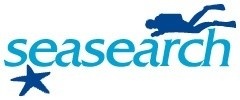Recording Data
How do we get all those vital observations from under and around the sea into our databases to help educate, inform and create positive change?
Image by Holly Date
The recording 'process'
Volunteers completing a Seasearch form after a dive or snorkel will record ‘everything’ they see and recognise during the survey, not just documenting the presence (or absence) from a pre-determined list of marine life.
As well as describing the underwater landscape in terms of the physical seabed and the main biological communities found there, an estimate of the abundance of the marine life is also logged.
There are two different levels of recording data (see to the right).
We also have three specific surveys which are detailed below - Sea fans, Crawfish and Sea caves.
The 'Observation Form'
The form and its use are explained in detail in the entry-level Observer course. This is a straightforward form that can be completed after any dive and provides information about the main habitat and seabed cover types you found on your dive as well as some of the principal species of marine life.
It takes between 15 and 30 minutes to complete and gives us an excellent overview of a site to build up the map.
The 'Survey Form'
The more detailed level of recording is done on the Survey Form – covered in the higher-level Surveyor training. A Survey form requires more time and effort to complete but also provides us with much more information to use.
This form is used for more comprehensive data collection, possibly as a follow-up to an initial Observation form from a new/un-recorded site.
You will need the latest version of Adobe Acrobat Reader (N.B. we are aware of issues with Preview on Macs, e.g. by leaving some fields blank - please use Acrobat Reader instead) installed on your computer to read, edit and print out these files. If you don't have it already it's available for free from the Adobe Website. If you have problems embedding the sketch into that section on the interactive version of the PDF, please send us the image file accompanying the form.
Making it easier to identify your subjects!
In order to improve the quality of records received Seasearch produces a series of illustrated identification guides. These range from an introductory guide to a range of species to more specialised guides for different groups, currently covering Sea Anemones and Corals, Sea Squirts and Sponges, Seaweeds and Bryozoans and Hydroids. All of the guides are aimed at improving in situ recording and are illustrated by underwater images from Seasearch divers.
Copies of all of these guides can be bought from the Seasearch shop.


Sea fan Surveys
Sea fans - Eunicella verrucosa (pink seafan) and Swiftia pallida (northern seafan) - are both priority marine species and all records of them are important.
Find out more about sea fans and how to collect sea fan data on the sea fan survey page.
Crawfish Recording
We want divers to look out for crawfish and tell us wherever they see them. The aim of this recording project is to add to our knowledge of the distribution of crawfish and to inform other research and management measures to protect them. Seasearch divers are a major source of crawfish records on the National Biodiversity Network (NBN).
If you are lucky enough to see a crawfish please DO NOT COLLECT IT (even where it is legal to do so). Cornwall Wildlife Trust has a campaign for divers and boat owners to pledge not to collect crawfish. Please sign up to this and show your support.

PLEASE NOTE:
Crawfish seen as part of a Seasearch Observer or Surveyor dive should be recorded only on the relevant form. Please do not also try and submit the record anywhere else, as this can create duplicates.
Crawfish seen on any other dives should be recorded via the iRecord crawfish webpage (see link below).
This iRecord page replaces the old Seasearch crawfish form.

Sea cave Surveys
Sea caves are an Annex 1 feature under the Habitats Directive (further information from JNCC) and are relatively scarce in Europe apart from along the western coasts of the British Isles. In order to establish the best inventory possible of this habitat, NatureScot is keen to enlist the help of all sea users (not just divers) in identifying the location of sea caves.
This specific recording form enables the location of the cave entrance to be recorded, with some additional information. It also allows charted cave features that are NOT caves to be identified.
N.B. The recording form does NOT require entering the cave and volunteers are strongly encouraged NOT to do so.

